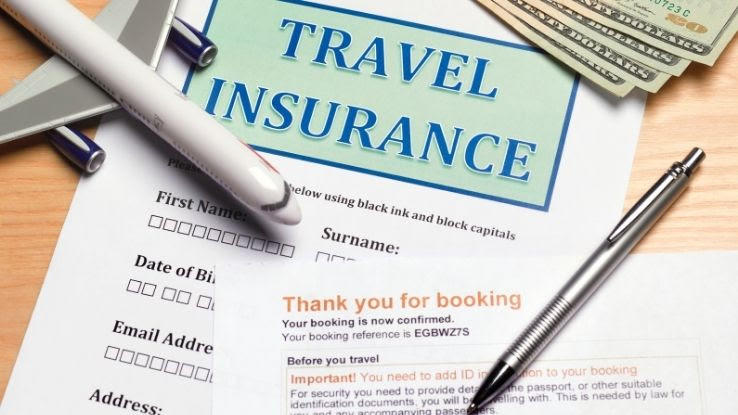Get This Report about Pacific Prime
Table of ContentsThe 7-Minute Rule for Pacific PrimeTop Guidelines Of Pacific PrimeNot known Facts About Pacific PrimeAll About Pacific Prime
In the majority of states, the insurance company is needed to send you a copy of the changes to your plan. It is necessary that you read Endorsements or Riders so you comprehend how your policy has actually altered and if the policy is still adequate to fulfill your demands. To obtain a duplicate of your insurance coverage policy, please call your insurance coverage representative or firm.
The Institute of Medication (IOM) Committee on the Repercussions of Uninsurance launches a prolonged evaluation of evidence that addresses the value of medical insurance protection with the publication of this report. Protection Matters is the very first in a series of 6 reports that will be released over the next two years documenting the fact and effects of having actually an estimated 40 million people in the United States without medical insurance coverage.

The smart Trick of Pacific Prime That Nobody is Talking About
The objective of this collection of researches is to refocus policy interest on a longstanding issue. Following the longest financial growth in American background, in 1999, an approximated one out of every 6 Americans32 million adults under the age of 65 and greater than 10 million childrenremains uninsured (Mills, 2000).

Ten percent of the populace make up 70 percent of health treatment expenditures, a relationship that has remained consistent over the previous three years (Berk and Monheit, 2001) - international health insurance. Thus health and wellness insurance remains to serve the feature of spreading risk also as it significantly finances regular treatment. From the perspective of healthcare suppliers, insurance policy brought by their clients aids secure a revenue stream, and neighborhoods benefit from monetarily practical and secure healthcare experts and establishments
Federal government supplies medical insurance to populations whom the exclusive market may not serve efficiently, such as handicapped and senior citizens, and populations whose access to health and wellness treatment is socially valued, such as children and expectant ladies. The utmost ends of medical insurance coverage for the individual and communities, consisting of office communities of employees and employers, are enhanced wellness results and quality of life.
Our Pacific Prime Statements
Workers rank medical insurance first by much in significance amongst all the benefits offered in the work environment (Salisbury, 2001). There have actually been sizable financial investments of individual and public funds to provide health and wellness insurance coverage, numerous people still have no insurance coverage. Despite substantial coverage of study findings and healthcare research study results, the public continues to be baffled and mistaken concerning Americans without health and wellness insurance coverage and the ramifications of doing not have insurance coverage.

Without doubt, the intricacy of American healthcare financing systems and the riches of resources of information add to the general public's complication and apprehension concerning medical insurance statistics and their analysis. This record and those that will follow purpose to boil down and present in readily reasonable terms the substantial study that births on questions of medical insurance protection and its importance.
Fifty-seven percent of Americans questioned in 1999 thought that those without medical insurance are "able to obtain the care they need from medical professionals and medical facilities" (Blendon et al., 1999, p. 207). In 1993, when national interest was focused on the issues of the uninsured and on pending wellness care regulation, just 43 percent of those questioned held this belief (Blendon et al., 1999).

They likewise receive fewer preventative solutions and are much less most likely to have regular take care of persistent conditions such as hypertension and diabetes mellitus. Persistent diseases can result in expensive and disabling complications if they are not well managed (Lurie et al., 1984; Lurie et al., 1986; Ayanian et al., 2000). One nationwide study asked even more than 3,400 grownups concerning 15 extremely serious or dark conditions.
The 6-Minute Rule for Pacific Prime
Added proof is offered later in this chapter in the conversation of insurance and access to healthcare. https://dzone.com/users/5122954/pacificpr1me.html. People without medical insurance are young and healthy and balanced and pick to go without insurance coverage. Nearly half (43 percent) of those surveyed in 2000 believed that individuals without health and wellness insurance coverage are more probable to have health issue than people with insurance policy
Voters and plan makers in focus group conversations identify those without insurance as youths that have the opportunity to be covered and feel they do not need it (Doorperson Novelli, 2001). Contrasted to those with a minimum of some exclusive protection, the without insurance are less most likely to report remaining in excellent or really good wellness (Firm for Healthcare Study and Top Quality, 2001).
SOURCE: Facility for Cost and Funding Studies, Firm for Health Care Research and Top quality, based on MEPS information. Young adults in between 19 and 34 are much more most likely to lack health and wellness insurance than any other age. This is mainly because they are much less often eligible for my response employment-based insurance due to the nature of their work or their short period in it.
The perception that people without insurance policy have better-than-average health follows from perplexing the relatively young age profile of the uninsured with the far better wellness, generally, of younger individuals. This covers the web link in between wellness standing and health insurance. For those without access to workplace health insurance policy, inadequate health and wellness is a prospective obstacle to acquiring nongroup protection because such protection might be extremely valued, leave out pre-existing problems, or be simply unavailable.